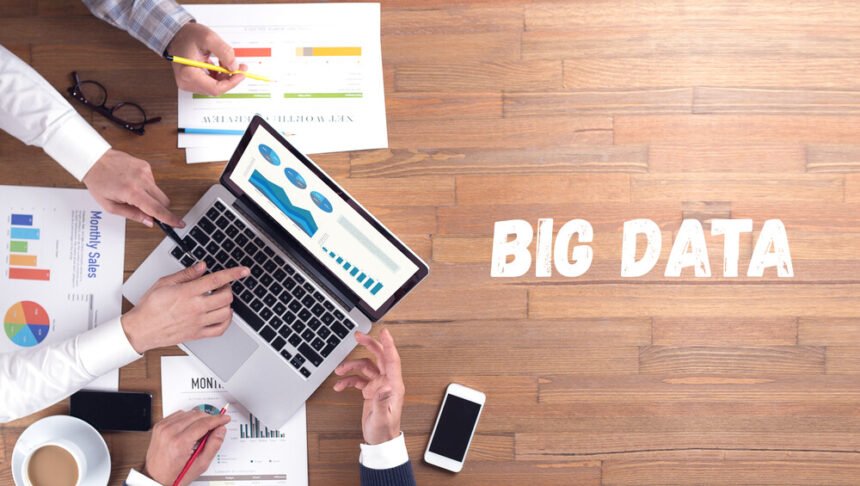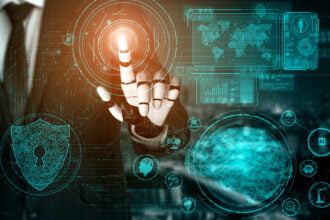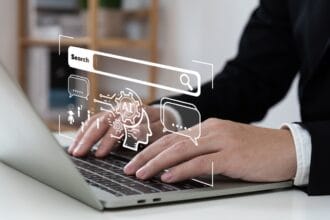Artificial intelligence is the pillar of the new digital technology landscape. Since a growing number of companies are relying on digital technology for a variety of purposes, the impact this will have will be significant. There are a number of indicators that AI is going to be even more important in the near future.
The role of the pandemic on the modern workplace cannot be overstated. AI is going to be even more important as companies find new ways to use AI to create a more digitized workplace.
Role of AI in Workplaces After the Pandemic Subsides
The combination of COVID-19 with the pre-existing trends of digital transformation have caused nothing short of an AI revolution in the workplace over the past 12-15 months. According to McKinsey’s research, the pace of digital transformation accelerated by 7 years in the past several months. AI is going to be even more important for solving many of these challenges.
It’s partly because the coronavirus pandemic forced a large number of enterprises to embrace, or at least accept, the work-from-home model. The experience revealed that many employees really are just as productive, if not more so, when they’re working outside the office. A number of companies are finding new ways to use AI to make remote working more effective, such as using AI time tracking tools.
At the same time, fears of infection and lockdown orders led customers to demand more digital interactions and online services, driving companies to speedily adopt and master the digital technologies and digital culture needed to meet client and consumer needs. Digital tools like self-serve customer portals, mobile and contactless payments, digital receipts and invoices, and more have become accepted and expected almost overnight. Around 84% of CEOs say they look to digital initiatives to drive profitability in a post-COVID world.
These twin forces of digital transformation have been driving a metamorphosis in the workplace and for employee experience in general. What practical changes can we expect to see during the rest of 2021, and how might the workplace appear in 2022?
Hybrid workplaces will become the norm
There’s no going back to the assumption that the vast majority, if not all, of your employees will be physically present in the office every working day. A study found that 80% of full-time workers want to continue working from home at least 3 times a week, so there’ll be no need to offer each one their own personal desk. Hot desking and shared workstations will take over as companies find ways to use AI to create more hybrid workplace models.
In-person employee amenities will be replaced by virtual ones, like online yoga instead of in-person sessions and multi-player games instead of the foosball table. Teams will grow accustomed (if they aren’t already) to holding multi-channel meetings, with some employees in the office and some tuning in through video conferencing platforms.
As a result, enterprises will have to invest in better AI and cloud-based collaboration, document-sharing, project management, and communication platforms, so employees can successfully carry out the same work from home.
Talent won’t stop at the border
AI technology has also made it easier to have remote workplaces that transcend national boundaries. International workplaces are increasingly becoming the norm and digital advances have made them possible.
Once your employees can work from home, they can work from anywhere, so there’s nothing stopping enterprises from hiring the best talent available, no matter where people are located. By the same token, jobseekers won’t feel restricted by decisions about whether or not to relocate for a good job offer, so the talent hunt won’t stop at the border.
This can lead to more diverse teams which span a greater range of cultures, outlooks, and interests, helping broaden horizons for all concerned. The more diverse the team, the greater the innovation, so a broader talent base could help drive new developments in a range of enterprises in the long term.
Communication becomes conscious
When all your employees are present in the office, communication takes place naturally at the water cooler or on lunch breaks, and trust bonds form of their own. But when only a percentage of the staff is in the same location at any given time, the new workplace will have to pay conscious attention to growing trust within and between teams.
The role of employee experience manager, which is still in its infancy, will become more important in enterprises that need to build a shared company culture across a disparate, and increasingly culturally diverse, workforce. Tasks like coordinating in-person and virtual events, curating shared internal content, and moderating company communication forums will grow in significance. For example, one company just created the position of “VP Work From Anywhere” to develop programs that embrace people working remotely.
Training becomes a constant
Digital transformation doesn’t happen overnight, even with AI tools available. Most enterprises still need to consolidate digital adoption. On top of that, tech doesn’t stay still, so they have to secure the necessary digital talent to keep abreast of the cutting edge of tech.
It’s far from practical to hire an all-new workforce of digital talent with even the best AI technology at your fingertips, even if there were enough jobseekers with the right skills. Your existing employees need training to master their new tools, especially older workers who may not be digital natives, but do possess valuable domain knowledge that you can’t afford to lose.
Training programs are the logical solution for enterprises to fill skills gaps and remain competitive, but traditional approaches are unexciting, ineffective, and take employees away from their work tasks. We’re seeing new employee training programs that weave AI learning into the flow of work with popup prompts and wizards, moving it to become a constant, engaging, and potentially virtual experience, rather than an occasional interruption. AI is going to make training a lot more effective in the future.
Internal talent mobility increases
The combination of increased remote work options and ongoing, remote employee training means that workplaces can offer employees more flexibility across their working lives. Top companies are developing internal talent marketplaces that allow employees to select roles and projects from a wider range of choices, according to their interests, time available, and work-life rhythm.
For example, employees can climb the ladder quickly when they join a company, if they so desire; move sideways into a less pressured position while raising a family; take on more responsibility when their life situation permits. Greater flexibility translates into greater employee satisfaction; for example, McKinsey reports that working mothers who were able to match their schedules according to their availability were three times more likely to have positive wellbeing than those with inflexible, inefficient scheduling.
The new workplace is here to stay and AI is leading the way
There’s no turning the clock back to a pre-COVID workplace. Digital transformation is here to stay, bringing with it hybrid workplaces, a more diverse workforce, a new need for improved training and employee experience, and employees who embrace a more flexible work schedule and non-linear career path. With foresight and care, enterprises can use these trends to drive employee engagement, productivity, and profitability.











